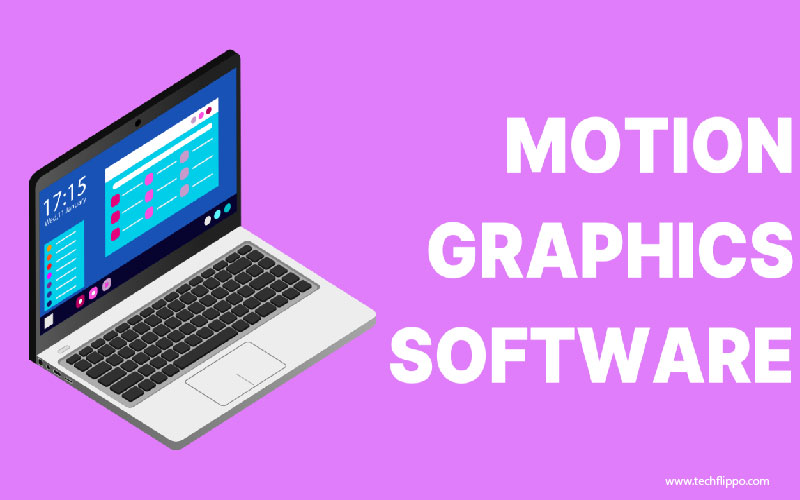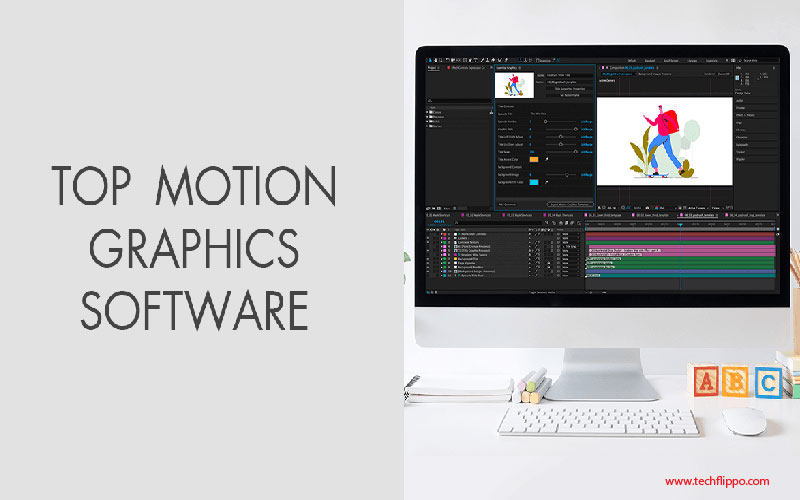A Beginner’s Guide to Motion Graphics Software: Which One is Right for You?
Motion graphics have become a vital part of visual storytelling in today’s digital landscape. Whether it’s for social media, advertisements, or even educational content, motion graphics breathe life into static images and text. But with so many software options available, diving into this creative realm can feel overwhelming.
Are you eager to explore the world of motion graphics? Do you want to create stunning visuals that captivate your audience? Choosing the right motion graphics software is crucial for unleashing your creativity and honing your skills. This guide will walk you through everything you need to know about finding the perfect fit for your projects. Let’s get started!

Understanding the Different Types of Motion Graphics
Motion graphics encompass a wide range of styles and techniques. Understanding these can help you choose the right approach for your projects.
Animated text is one popular type. It brings static words to life, adding energy and emphasis to messages. This style is often used in promotional videos or title sequences.
Infographics are another powerful option. They combine visuals with data, making complex information more digestible. These are especially effective for educational content.
Character animation adds personality to motion graphics. By creating animated characters, you can tell stories that resonate with viewers on an emotional level.
3D motion graphics provide depth and realism that flat designs cannot achieve. This technique suits industries like gaming or product visualization quite well.
Each type has its unique strengths and applications, allowing creators to express ideas in diverse ways while engaging their audiences effectively.
Popular Motion Graphics Software Options
When diving into the realm of motion graphics, several software options stand out. Adobe After Effects is a powerhouse. It offers extensive features for animation and compositing, making it a favorite among professionals.
On the other hand, Blender brings something unique to the table. This open-source software excels in 3D modeling and animation. It’s perfect for those looking to explore beyond typical 2D graphics.
For beginners seeking an intuitive interface, HitFilm Express might be ideal. With its user-friendly design and built-in tutorials, it’s great for newcomers wanting immediate results.
Another noteworthy option is Apple Motion. Tailored for Mac users, this software provides real-time feedback during editing sessions—ideal for quick iterations.
Cinema 4D deserves mention as well. Its focus on 3D motion graphics opens up creative possibilities that can elevate any project significantly. Each choice has distinct strengths waiting to be explored.
Pros and Cons of Each Software
Adobe After Effects is a powerhouse for professionals. It offers extensive features and plugins, making it versatile. However, the learning curve can be steep for newcomers.
Then there’s Blender, which is free and open-source. It’s great for 3D animation but may require additional time to master its interface. Some users find it overwhelming at first.
Cinema 4D shines with its user-friendly design and robust capabilities in motion graphics. Yet, it comes with a hefty price tag that might not suit everyone’s budget.
HitFilm Express provides an excellent entry point for beginners without breaking the bank. The downside? Its range of advanced features can feel limited compared to more established tools as you grow in skill level. Each software has distinct advantages and disadvantages based on your needs and experience level.

Factors to Consider When Choosing a Software
When selecting motion graphics software, usability is key. A user-friendly interface can significantly enhance your creative process. Look for tools that offer intuitive navigation and helpful tutorials.
Budget is another crucial factor. Some software options come with hefty price tags, while others are more affordable or even free. Determine what you’re willing to invest before diving in.
Compatibility matters too. Ensure the software aligns with your operating system and integrates well with other programs you use regularly.
Consider the features essential for your projects. Do you need advanced 3D capabilities? Or will basic animation suffice? Tailor your choice to fit both current needs and future aspirations.
Check community support and resources available online. A strong community can provide invaluable guidance as you learn and grow in motion graphics design.
Tips for Learning and Mastering Motion Graphics Software
Start by familiarizing yourself with the software interface. Spend time exploring menus, tools, and shortcuts. This initial investment in learning will pay off as you become more efficient.
Utilize online tutorials and resources. Websites like YouTube and Skillshare offer countless free lessons tailored for beginners to advanced users alike.
Practice consistently. Create small projects that challenge your skills but remain manageable. This could be anything from a simple animated logo to a brief intro video.
Join online communities or forums focused on motion graphics. Engaging with others can inspire new ideas and provide valuable feedback on your work.
Don’t be afraid to experiment with different styles and techniques. Trying out diverse approaches helps you discover what resonates most with your creative vision.
Stay updated on industry trends by following professionals in the field through social media platforms or blogs dedicated to motion graphics innovations.
Conclusion
When diving into the world of motion graphics software, it’s essential to recognize that there is no one-size-fits-all solution. Each software option presents unique features and capabilities tailored for different skill levels and project types. Your choice will ultimately depend on your specific needs, budget, and willingness to learn.
Whether you’re a beginner looking to create simple animations or an experienced designer aiming for complex visual storytelling, understanding what each program offers can enhance your creative journey. Consider experimenting with trial versions when available; this hands-on approach allows you to gauge which platform resonates best with your workflow.
As you embark on mastering motion graphics software, remember that practice is key. Take advantage of online tutorials, forums, and community resources to build confidence in your skills. With time and dedication, you’ll unlock the potential within these powerful tools.
Choosing the right motion graphics software is just the beginning of a rewarding adventure filled with endless creative possibilities.